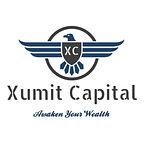XC Portfolio: Multi-Factor Investing
Factor investing is an investment strategy which focuses on key performance metrics to generate alpha (risk adjusted excess returns) in comparison to the benchmark. Factors can also be considered as the stock market anomalies as technically according to the ‘Efficient Market Hypothesis’ all the information related to a stock is already incorporated in its price and it should be almost impossible to generate higher risk adjusted returns. But investors for years, particularly quantitative investors have been using factor models to generate higher risk adjusted returns.
Though there are numerous studies that claim to have discovered new factors, the following are the five basic factors recognized by academics and extensively used by investors to generate excess returns.
Size
Eugene Fama and Kenneth French created the Fama French factor model in the 1990s, which argued that small cap companies outperform large cap companies. The explanation given was that small cap stocks are intrinsically riskier than large cap equities since these firms are more volatile and have a higher probability of bankruptcy. This element may be leveraged by purchasing stocks with low market capitalizations. However, keep in mind that these stocks might be quite dangerous.
Value
The second factor provided by Fama French in their model was that stocks with high book to price ratios tend to outperform low book to price ratio stocks. Though Fama and French defined value in terms of book to price ratios there are several alternatives to measure value of a stock such as Price to Earnings ratio applied by Graham and Dodd (1949) and EVEBIT and EVEBITDA applied by Greenblatt (2010).
Momentum
The momentum anomaly states that the stocks that have gone up in the past 12 months will continue to do so in the near future. The empirical evidence for this phenomenon was published in 1993 by Narasimhan Jegadeesh and Sheridan Titman. The momentum factor has been the strongest among all the factors and was labelled as ‘The Premier Anomaly’ by Eugene Fama, the progenitor of the Efficient Market Hypothesis.
Quality
While investors such as Warren Buffett have long emphasised quality as a stock selection criterion, empirical data supporting quality as a factor in producing excess returns has just lately surfaced. Richard Sloan and Scott Richardson published significant research indicating that organisations with superior earnings quality or fewer accruals (generally defined as the gap between operational cash flow and net income) excelled over time. While quality may be defined in a variety of ways, the most frequent quality indicators include ROCE, ROIC, ROE, Debt to Equity ratio, and earnings quality assessed by the difference between cash and accruals.
Low Volatility
Empirical evidence suggests that equities with low volatility yield greater risk-adjusted returns than those with high volatility. Investing in equities with low volatility, as defined by the stock’s standard deviation, might thus be a more profitable endeavour than investing in a stock with a high standard deviation.
All of the above mentioned factors have empirically proven to generate higher alpha in comparison to the benchmark when used in isolation to each other. But there have been numerous studies that show that combining two or more factors together can outperform the pure factor strategies as the limitations of one factor can be eliminated by using another factor.
For instance, if we use P/E ratio as a metric of value then stocks that have low P/E ratio because of their poor future prospects will also be included in a value portfolio and therefore, using an additional filter of quality like ROCE along with low P/E ratio can help to generate higher risk adjusted returns as shown by Novy Marx (2013 a,b) suggesting large profitable value stocks can outperform alternative benchmark strategies.
Therefore, looking at the benefits of combining two or more factors a portfolio can be constructed using value, quality and momentum. The first step in this strategy is to list the companies with the largest market capitalizations to filter out the illiquid stocks. After listing the stocks with largest market capitalizations the next step is to screen the stocks on a metric of value i.e. selecting the top 20% of the companies that have the lowest EV/EBITDA ratio in this case.
The next step is to screen the stocks on a metric of profitability. While there are many measures of profitability like ROE, ROIC, ROA we have selected ROCE. Hence, after selecting the top 20 % companies that have the lowest EV/EBITDA ratio we select the top 50 % of companies having the highest ROCE.
Having selected the stocks on the basis of value and profitability the last step is to use a filter of momentum in stocks. For this the methodology provided by Jegadeesh and Titman has been used where the top 50% of the stocks which were able to get past the first two screens that have gone up the most in the last 12 months skipping the latest month have been selected. After running all the screens we get a list of 10 to 12 stocks that are included in a portfolio.
Factors are cyclical in nature and may not always work, but because they are typically negatively correlated with one another, it makes sense to combine two or more factors to construct a portfolio.
> Written by Shantnu Sood (shantnu.sood@xumitcapital.com)
References:
Fama, Eugene F., and Kenneth R. French, 1996, Multifactor Explanations of Asset Pricing Anomalies, Journal of Finance.
Jegadeesh, Narasimhan, and Sheridan Titman, 1993, Returns to buying winners and selling losers: Implications for stock market efficiency, Journal of Finance 48, 65– 91.
Sloan, R. (1996). Do Stock Prices Reflect Information in Accruals and Cash Flows about Future Earnings? Accounting Review, 71, 289–315.
Novy-Marx, R., 2013a. The quality dimension of value investing. Rnm. simon. Rochester. edu 1–54.
Novy-Marx, R., 2013b. The other side of value: the gross profitability premium. J. Finance. Econ. 108 (1), 1–28.
